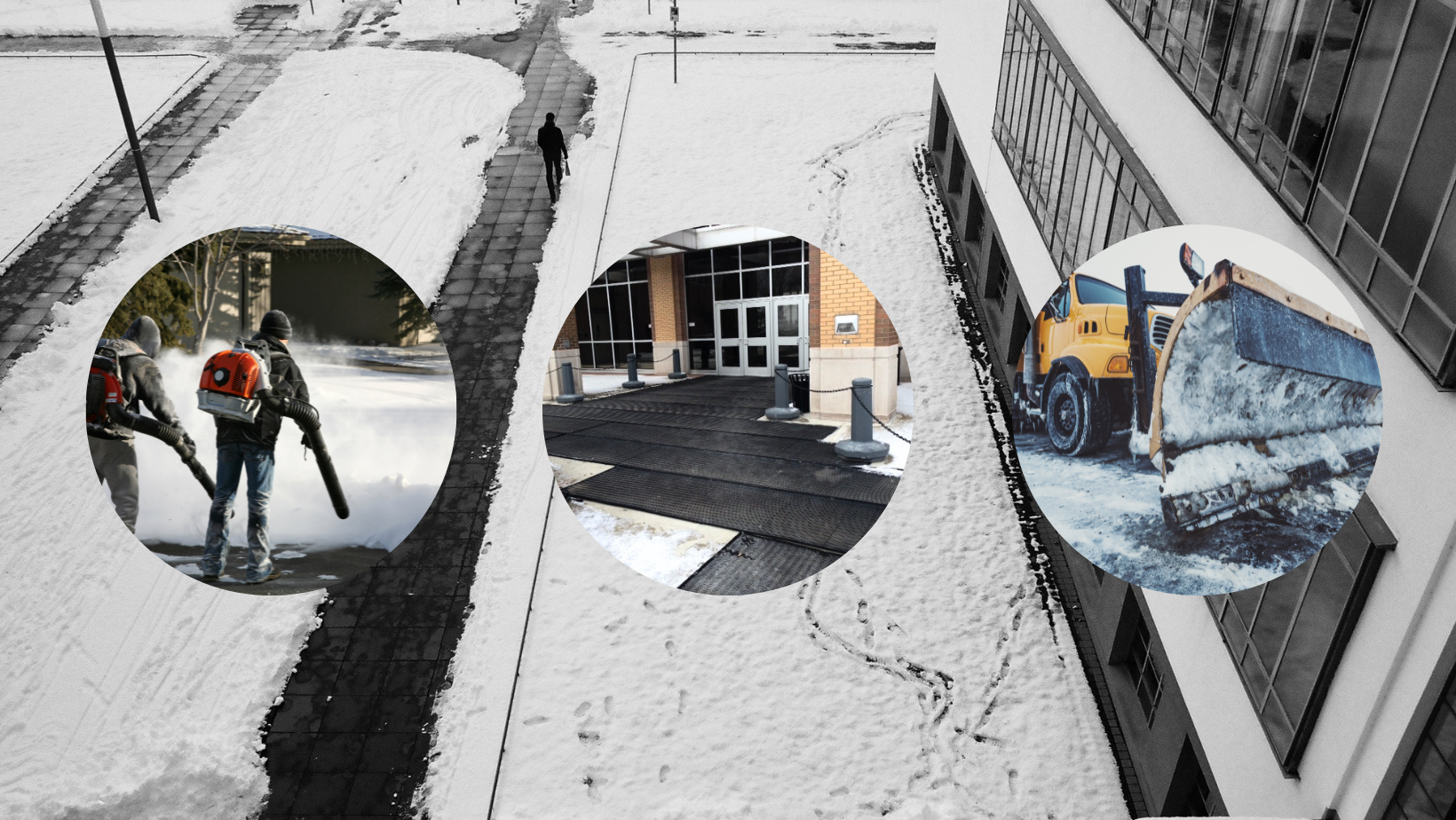Workplace slips and falls can have profound consequences, from serious injuries to financial loss, and in unfortunate cases, fatalities. Disturbingly, weather and atmospheric conditions often exacerbate these accidents. Recent data underscores the severity of these incidents and the pressing need for preventive measures. This blog post will explore data concerning workplace slips and falls, emphasizing the importance of action to reduce risk and mitigate the associated costs.
The Significant Role of Weather Conditions in Workplace Accidents
Of the fatalities in 2020, 41.5 percent (22 deaths) were due to "Ice, sleet, or snow", while another 35.8 percent (19 deaths) resulted from "High winds, gusts, and turbulence". This data significantly points to the often overlooked but substantial impact of weather conditions on workplace safety, especially concerning slips and falls.
While these figures may be alarming, it's crucial to note that they do not include falls from heights or through surfaces, indicating an even greater influence of weather-related slips and falls in the workplace. Ranging from minor injuries to life-altering consequences, these accidents present a serious concern for employers and employees alike.
According to the Occupational Safety and Health Administration (OSHA), slips and falls contribute to 20% of all workplace injuries. The financial implications are significant, with billions spent on insurance claims, lost work hours, and the costs related to accidental deaths. Remarkably, slips and falls are the second leading cause of accidental deaths in the workplace, responsible for 15% of all such fatalities, second only to motor vehicle accidents.
The Impact on Healthcare and the Economy
The healthcare costs and economic impact of winter slips and falls are substantial. The Centers for Disease Control and Prevention (CDC) reported that in 2015, the medical costs associated with these incidents exceeded $50 billion. Over 800,000 individuals were hospitalized due to slip and fall injuries, with hip and head injuries being the most common. These figures underscore the significant toll on victims and their families and the pressing need for preventive measures.
Addressing the Issue with Proactive Measures
To help mitigate the risk of weather-related slips and falls in workplaces, businesses require effective preventive solutions. One innovative option stands out: industrial-grade snow and ice melting mats. These mats offer a practical and reliable approach to combat winter hazards, ensuring the safety of employees and customers alike.
Benefits of Snow and Ice Melting Mats
Enhanced Safety: By preventing snow accumulation and melting ice, these mats significantly reduce the risk of slips and falls. They provide a safer environment, allowing employees and customers to traverse walkways, entrances, and parking lots with confidence.
Cost Savings: Snow and ice melting mats can result in considerable cost savings for businesses. By reducing accidents, companies can avoid expensive insurance claims, liability lawsuits, and lost work hours. This proactive approach leads to long-term financial benefits.
Easy Installation and Maintenance: These mats are designed for convenience. They can be quickly installed and require minimal maintenance, withstanding heavy foot traffic and harsh weather conditions for enhanced durability and longevity.
The Key Benefits: Safety, Savings, Convenience, and Wow-Factor
The benefits of industrial-grade snow and ice melting mats extend beyond safety and cost savings. They can significantly reduce labor associated with snow removal, adding to labor savings. Furthermore, the convenience they provide by maintaining clear and safe pathways with minimal effort can significantly enhance the overall efficiency of your operation.
Perhaps one of the most significant advantages is the wow-factor they present to your customers and staff. Creating a safe, snow, and ice-free environment, especially in harsh winter conditions, is not only impressive but also conveys a strong message about your commitment to safety and convenience.
Conclusion
The data we have discussed underlines the serious implications of slips and falls in the workplace, and the added risk posed by adverse weather conditions. Prioritizing preventive measures is vital to protecting employee well-being and maintaining financial stability. Industrial-grade snow and ice melting mats provide a practical solution to winter hazards, offering enhanced safety and potential cost savings.
Their other key benefits, such as reduced liability, labor savings, convenience, and the wow-factor, further strengthen the case for their implementation. By proactively addressing the issue, businesses can create a safer work environment and reduce the devastating effects of slips and falls.
Get in touch with a HeatTrak PRO expert today if you're ready to take action and implement a reliable solution. Our team will guide you through the process and help you choose the right snow and ice melting mats for your location. Don't wait until accidents happen—invest in proactive measures to safeguard your employees and save on potential costs. Contact us now to learn more about how HeatTrak PRO can benefit your business.
References
Bureau of Labor Statistics. (2020). Fatal injuries where weather and atmospheric conditions were the secondary source, 2019-2020. Learn more.
Occupational Safety and Health Administration (OSHA). (2020). Slips, Trips, and Falls. Learn more.
Centers for Disease Control and Prevention (CDC). (2015). The Cost of Falls Among Older Adults. Learn more.


